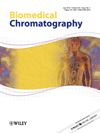
BIOMEDICAL CHROMATOGRAPHY
Scope & Guideline
Pioneering Discoveries in Drug Development
Introduction
Aims and Scopes
- Chromatographic Method Development and Validation:
The journal consistently publishes research on developing and validating various chromatographic methods, including HPLC, UHPLC, and LC-MS/MS, for the analysis of pharmaceuticals, natural products, and biological samples. - Pharmacokinetics and Drug Metabolism:
A significant focus is on pharmacokinetic studies, exploring the absorption, distribution, metabolism, and excretion of drugs in biological systems, often utilizing advanced chromatographic techniques. - Natural Product Analysis:
The journal includes research related to the analysis of bioactive compounds from natural sources, including traditional Chinese medicine, highlighting their pharmacological effects and mechanisms of action. - Quality Control and Regulatory Compliance:
There is a consistent emphasis on quality control methodologies, including stability-indicating methods and the application of quality-by-design principles in method development. - Biomarker Discovery and Metabolomics:
The journal covers studies integrating metabolomics with chromatography to identify biomarkers related to diseases or therapeutic effects, showcasing the role of metabolic profiling in biomedical research.
Trending and Emerging
- Integration of Omics Technologies:
There is a growing trend towards integrating chromatography with omics technologies (e.g., metabolomics, proteomics) to provide a more comprehensive understanding of biological systems and drug effects. - Advanced Analytical Techniques:
The journal showcases an increasing number of studies employing novel analytical techniques such as high-resolution mass spectrometry, two-dimensional chromatography, and microextraction methods. - Sustainability in Analytical Chemistry:
Research focusing on green analytical chemistry practices and environmentally friendly methodologies is on the rise, reflecting a broader awareness and commitment to sustainable practices in biomedical research. - Drug-Drug Interaction Studies:
There is an increasing emphasis on pharmacokinetic studies that investigate drug-drug interactions, particularly within the context of complex therapies involving multiple medications. - Personalized Medicine and Therapeutic Drug Monitoring:
The journal is seeing a surge in studies related to personalized medicine, including the quantification of therapeutic drugs and their metabolites to optimize individual patient treatment regimens.
Declining or Waning
- Traditional Herbal Medicine Studies:
While herbal medicine remains an important area of research, the volume of studies focusing solely on traditional herbal remedies has decreased in favor of more integrative approaches that include modern analytical techniques. - Basic Chromatographic Techniques:
There is a noticeable decline in publications centered on basic chromatographic techniques without advanced applications or integrations, as researchers increasingly seek to publish studies that demonstrate novel applications or improvements. - Single Component Analysis:
Research focusing on the analysis of single compounds has diminished, with a trend shifting towards multi-component analysis and the exploration of complex biological matrices.
Similar Journals
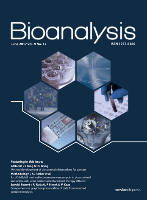
Bioanalysis
Connecting professionals to the latest in bioanalytical advancements.Bioanalysis is a distinguished journal published by Taylor & Francis Ltd, dedicated to advancing the field of analytical and clinical biochemistry. Established in 2009, this journal has become a pivotal platform for high-quality, peer-reviewed research that explores innovative techniques in bioanalytical sciences, appealing to researchers, professionals, and students alike. With an impressive impact factor and ranked in the Q2 and Q3 quartiles across various categories, including Clinical Biochemistry and Pharmacology, Toxicology and Pharmaceutics, Bioanalysis serves as an essential resource for the latest developments in the interdisciplinary aspects of medicine and laboratory technology. While it does not currently offer open access, the journal is indexed in Scopus, ensuring visibility and accessibility to a global audience. The publication's commitment to enhancing knowledge in this vital area of research underscores its significance in fostering advancements that can lead to improved healthcare outcomes.

ACTA PHARMACEUTICA
Advancing pharmaceutical innovation for a healthier tomorrow.ACTA PHARMACEUTICA is a distinguished open-access journal published by SCIENDO, dedicated to advancing knowledge in the fields of medicine and pharmaceutical sciences. Established in 1992, the journal has made significant contributions to the scholarly community, providing a platform for innovative research and discussion. With a strong presence in both Q2 and Q3 quartiles across various categories including Pharmaceutical Science and Pharmacology, ACTA PHARMACEUTICA ranks favorably, positioning its contributions in the upper tiers of the field. The journal's commitment to open access since 2007 ensures that both practitioners and scholars have immediate access to cutting-edge developments, thereby fostering collaboration and knowledge sharing. With its scope spanning a broad spectrum of pharmaceutical and biomedical research, ACTA PHARMACEUTICA is an essential resource for researchers, professionals, and students keen to stay abreast of the latest advancements and trends in these vital areas of study.
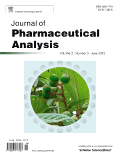
Journal of Pharmaceutical Analysis
Unlocking the potential of pharmaceutical evaluation and methods.Journal of Pharmaceutical Analysis is a premier open-access journal published by ELSEVIER, dedicated to advancing the field of pharmaceutical sciences. Since its inception in 2011, this journal has become a vital resource for researchers, professionals, and students, with a focus on analytical chemistry, drug discovery, and electrochemistry, among other subjects. With an impressive impact factor reflected in its Q1 ranking across multiple categories such as Analytical Chemistry and Drug Discovery in 2023, it maintains a high standard in the dissemination of innovative research. The journal not only facilitates the sharing of significant findings but also promotes collaboration and discussion within the community, making a notable impact globally. Articles published in the Journal of Pharmaceutical Analysis are easily accessible under an open-access model, ensuring that cutting-edge research reaches a diverse audience and enhances knowledge in this critical field. As it continues to converge research from 2011 to 2024, the journal remains a cornerstone in the study of pharmaceutical evaluation, analytical methods, and their applications.

JPC-JOURNAL OF PLANAR CHROMATOGRAPHY-MODERN TLC
Connecting Researchers to Cutting-Edge TLC Insights.JPC-JOURNAL OF PLANAR CHROMATOGRAPHY-MODERN TLC, published by Springer Heidelberg, is a pivotal resource in the fields of Analytical Chemistry, Biochemistry, and Clinical Biochemistry. With an ISSN of 0933-4173 and an E-ISSN of 1789-0993, this journal serves as an essential platform for the dissemination of innovative research on planar chromatography techniques, specifically modern thin-layer chromatography (TLC). With its upcoming coverage extending to 2024 and a third quartile ranking (Q3) across major scientific categories in 2023, it addresses the critical advancements and applications in analytical methods. Although it does not offer open access, the journal's rigorous peer-review process ensures high-quality findings that contribute to the progression of these vital scientific disciplines. The journal is located in Heidelberg, Germany, and continues to be a beacon for researchers, professionals, and students who seek to enhance their knowledge and practice in chromatographic techniques.

Bulletin of the University of Karaganda-Chemistry
Connecting Researchers to Drive Chemical DiscoveriesBulletin of the University of Karaganda-Chemistry is an esteemed academic journal published by KARAGANDA STATE UNIVERSITY, focusing on the field of chemistry and related disciplines. With an ISSN of 2518-718X and an E-ISSN of 2663-4872, this journal aims to disseminate high-quality research articles, reviews, and scholarly discussions that contribute to the advancement of knowledge in chemistry. Although it has experienced a transition in its coverage from 2021 to 2022, the journal remains a significant platform for researchers and students alike, promoting open access to its valuable content. Despite its current Scopus rank of #379/407 in the general chemistry category, the Bulletin of the University of Karaganda-Chemistry serves as a vital resource for the academic community in Kazakhstan and beyond, fostering collaboration and innovation in various chemical research domains. Researchers, professionals, and students are encouraged to engage with the journal as it continues to evolve and contribute to significant scientific discussions.

CHROMATOGRAPHIA
Elevating Research Standards in Analytical ChemistryCHROMATOGRAPHIA is a renowned scholarly journal published by Springer Heidelberg, specializing in the field of analytical chemistry, biochemistry, and organic chemistry since its inception in 1968. With its ISSN 0009-5893 and E-ISSN 1612-1112, the journal has maintained a robust profile, currently ranking in the Q3 and Q4 quartiles within significant Chemistry categories. Aimed at researchers, professionals, and students, CHROMATOGRAPHIA serves as a critical platform for disseminating innovative research, methodologies, and advancements related to chromatography and its applications in various scientific fields. While the journal is not open access, it offers significant visibility and scholarly contribution opportunities, making it an essential resource for those engaged in the vibrant intersection of chemistry and biochemistry.
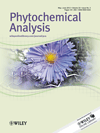
PHYTOCHEMICAL ANALYSIS
Exploring Phytochemicals: Bridging Science and ApplicationPHYTOCHEMICAL ANALYSIS is a renowned journal published by WILEY that serves as a vital resource in the fields of analytical chemistry, biochemistry, and plant sciences, among others. With an ISSN of 0958-0344 and an E-ISSN of 1099-1565, this journal has been at the forefront of phytochemical research since its inception in 1990, with a commitment to advancing knowledge up to 2024. Notably, it boasts impressive Scopus rankings, including a Q1 quartile in Complementary and Alternative Medicine, highlighting its significant impact in this area. The journal provides essential insights into phytochemical analysis for a diverse audience that includes researchers, industry professionals, and students, thereby facilitating the discovery and application of phytochemicals in various fields such as drug discovery and food science. The journal is not currently open access, yet it remains a pivotal platform for disseminating high-quality research findings. With its focus on interdisciplinary approaches and innovative methodologies, PHYTOCHEMICAL ANALYSIS continues to reinforce its reputation as a cornerstone of contemporary research in plant science and related disciplines.

Records of Natural Products
Harnessing Nature's Bounty for Scientific ProgressRecords of Natural Products is a distinguished journal focused on the dynamic fields of Drug Discovery, Organic Chemistry, Pharmacology, and Plant Science. Published by ACG PUBLICATIONS in Turkey, this journal serves as a vital platform for disseminating innovative research findings and advancements in natural product studies. With its convergence spanning from 2009 to 2024, Records of Natural Products holds a commendable position in the academic realm, featuring a 2023 Q3 ranking in Drug Discovery and Organic Chemistry, alongside a notable Q2 ranking in Plant Science. Despite its current lack of open access, the journal is committed to providing quality content that enriches the understanding of natural products and their potential applications. Researchers and professionals alike can benefit from the journal's insights, which not only contribute to scientific knowledge but also facilitate advancements in pharmaceuticals and sustainable practices. By exploring the rich tapestry of natural product research, this journal underscores its importance as a leading resource for professionals dedicated to enhancing the efficacy and application of natural compounds.
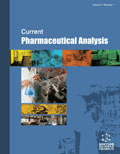
Current Pharmaceutical Analysis
Pioneering Analytical Methodologies for Tomorrow's MedicinesCurrent Pharmaceutical Analysis, published by Bentham Science Publishers Ltd, is a vital resource for professionals and researchers in the fields of Pharmaceutical Science, Biochemistry, and Molecular Medicine. Established in 2006, this peer-reviewed journal aims to provide a platform for the latest advancements and analytical methodologies in pharmaceutical research and drug development. Over the years, it has garnered attention for its rigorous scrutiny and contributions to the landscape of pharmacology, evidenced by its quartile placements in various categories, most notably Q3 in Pharmaceutical Science. Despite its current rankings placing it in the lower quartile in several disciplines, the journal remains an essential venue for both emerging and established researchers seeking to disseminate their findings. With the widespread accessibility of its articles, researchers, professionals, and students can engage with cutting-edge studies to foster innovation in pharmaceutical analysis. For access to the latest research contributions, readers can explore the digital archive and stay updated on pivotal discussions shaping the future of the pharmaceutical sciences.

Separation Science Plus
Fostering knowledge exchange in analytical advancements.Separation Science Plus is an emerging academic journal dedicated to advancing the field of analytical chemistry and separation science. Published by WILEY-VCH Verlag GmbH, this journal provides a platform for researchers to disseminate high-quality studies and reviews that address innovative techniques and breakthroughs in separation methodologies. With its ISSN 2573-1815, the journal has made significant inroads since its inception in 2018, encompassing a convergence period until 2024. Despite currently holding a Q3 ranking in Analytical Chemistry and a Q4 ranking in Filtration and Separation, its dedication to publishing impactful research makes it a vital resource for professionals and students alike. The journal operates under the robust scholarly reputation of WILEY, which is known for its commitment to excellence in scientific communication. Researchers interested in the latest advancements in separation techniques will find Separation Science Plus an essential read, fostering the exchange of knowledge and facilitating greater understanding within this specialized field.